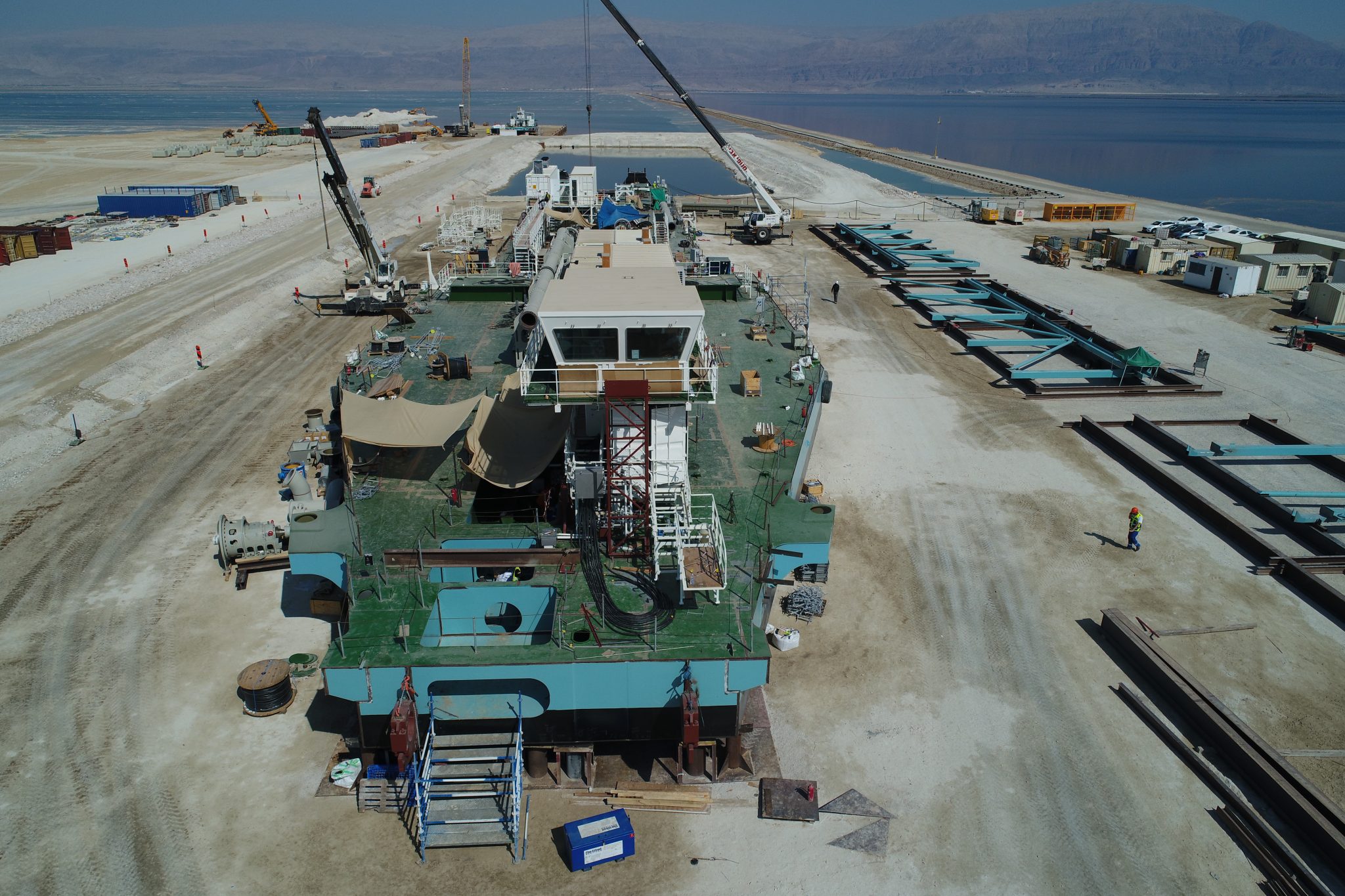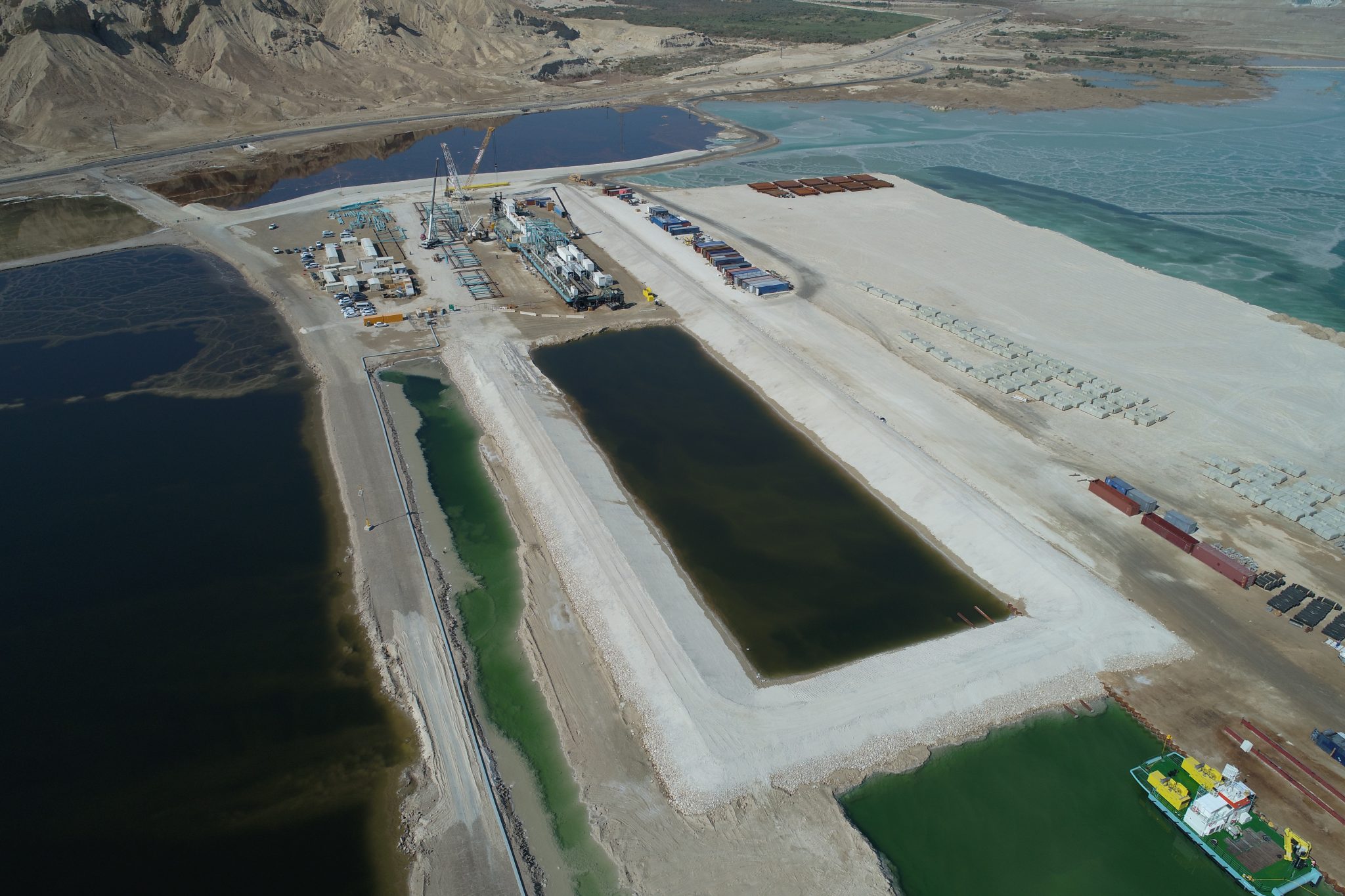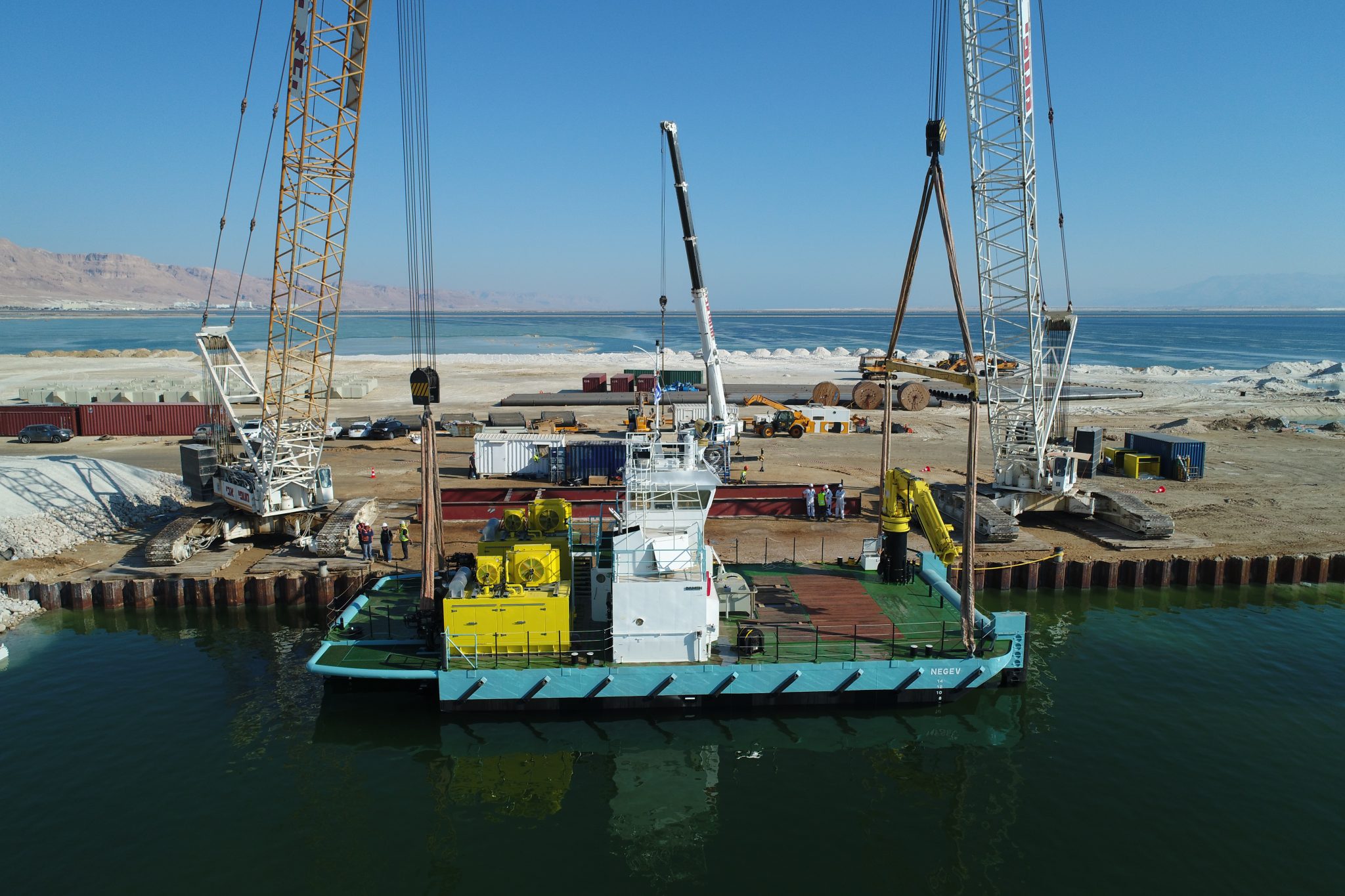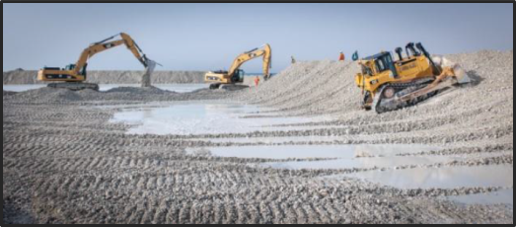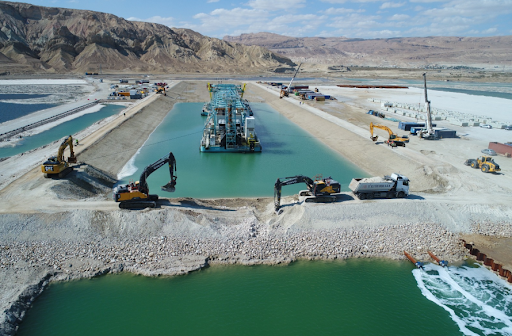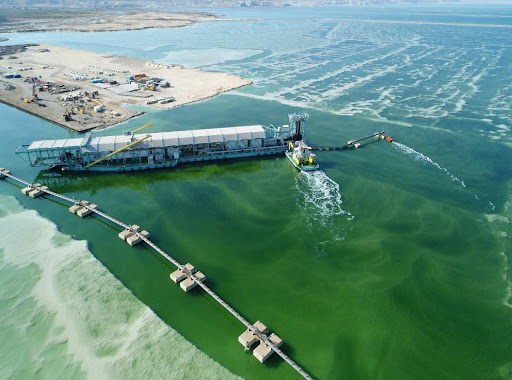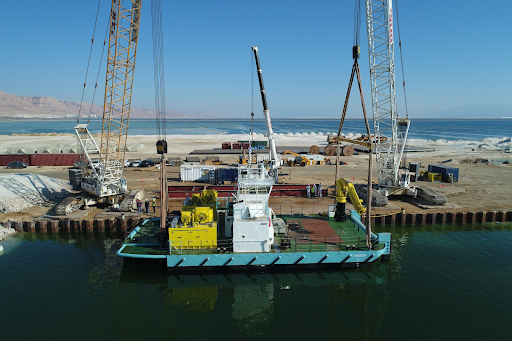If the water level in Pond 5 rises above a certain level, it may result in structural damage to the foundations of the hotel structures that are situated in proximity to the water’s edge, and to other infrastructure on the western shoreline. Therefore, it was decided to initiate a project to protect the hotels’ beaches and infrastructure. The project has been managed for the past few years by the (Government-owned) Dead Sea Preservation Company. As part of the coastline defenses project, and as a temporary solution, dikes and other coastline defenses were constructed on the western beach of the pond, near the hotels.
However, to provide a permanent solution to the rising water level in the pond, a Salt Harvesting Project was agreed upon with the Israeli government. This solution requires ICL Dead Sea to annually harvest approximately 20 million tonnes of salt from Pond 5 and transfer the salt to the Northern Basin of the Dead Sea, thereby stabilizing the water level.
At the core of the Salt Harvesting Project are salt dredgers, responsible for dredging the salt that precipitates at the bottom of the 80 square kilometer Pond 5. In October 2017, ICL signed an agreement with Holland Shallow Seas Dredging Ltd., to conduct the Salt Harvesting Project. In November 2020, after years of planning and construction, the operation of the first dredger began. The dredger, which was designed and created especially for the project, is continuously operated by dozens of workers who were recruited for the operation. It dredges an annual amount of about 8 million tonnes of salt from the bottom of the Southern Basin. It is the first one in a series of 2 to 3 dredgers that together will dredge about 20 million tonnes of salt annually, from the bottom of Pond 5.
The dredger is a marine excavator, 141 meters long and 24 meters wide. It is the largest electric dredger of its kind in the world, with an electrical power output of 10 MW. When designing the dredger, the needs of tourism in the area were considered, including the need to prevent noise while working near hotels. The dredger does not require diesel fuel for its operation, and therefore minimizes the risk of water pollution due to fuel leaks.
In the first stage, the harvested salt is stored in salt piles that are located on the eastern side of the pond, to minimize visibility. In the second stage, the salt will be transferred to the Northern Basin of the Dead Sea.
Recently a Request for Proposals (RFP) was issued for the planning, construction, operation, and maintenance of the salt transport array to the Northern Basin of the Dead Sea.
The agreed solution enables further development in the Dead Sea region. New hotels are now being planned, and the town of Neve Zohar (also adjacent to Pond 5) is planning to expand. Both developments have been made possible due to the stabilization of the water level in the pond, which will be the outcome of the salt harvesting project.



